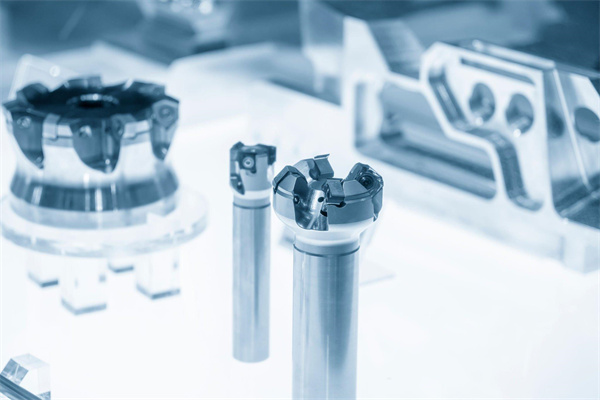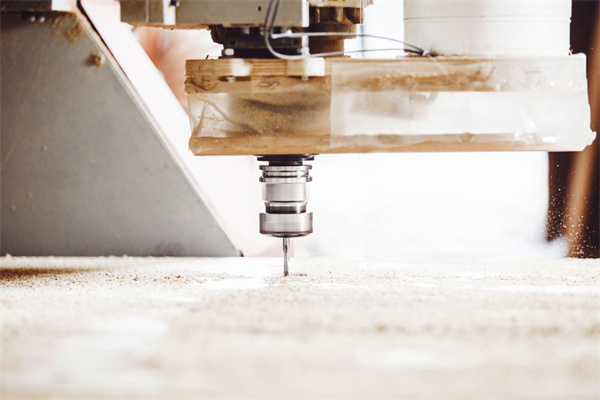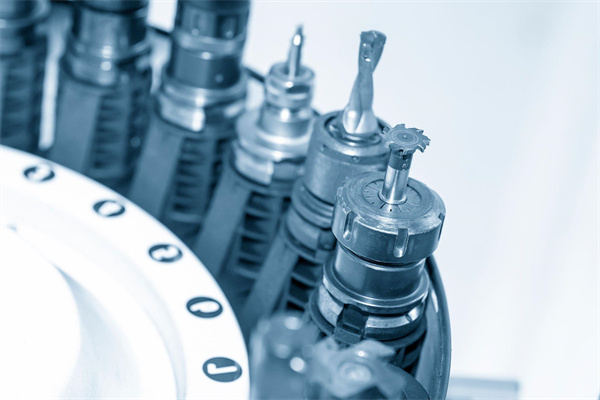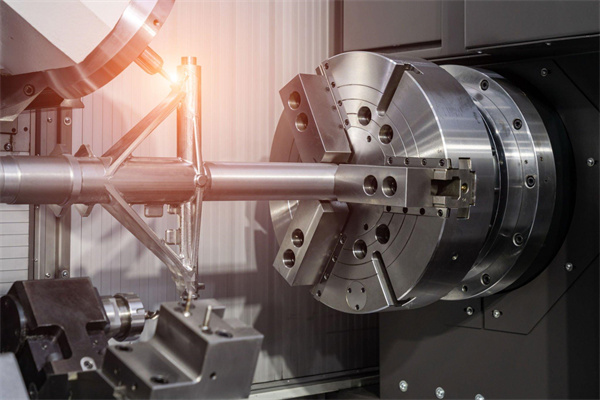[lwptoc]
Types of CNC machines
Computer numerical control (CNC) machines are a tool used by many industries to create a variety of components from metal, plastic, and other materials. From aerospace to automotive, CNC machines can be found in almost any industry that requires precision to create intricate parts and components. But what exactly is a CNC machine, and how can it be used?
At its core, a CNC machine is an automated system that uses computer-aided design (CAD) software to control the movements of cutting tools, such as milling tools or drill bits. These tools’ actions are governed by commands sent from the computer’s processor to the motors in the machine. This process allows for precise cutting and drilling with repeatable accuracy. Once the program has been written into the CNC controller, it can be run multiple times with no further input from an operator required.
Regarding types of CNC machines, there are two general categories: Lathes and Mills. According to programmed instructions, lathes use rotating tools such as chisels to shape materials like wood or metal into specific shapes. Mills are more versatile than lathes because they use cutters that move along a series of axes to cut different shapes from both ferrous and non-ferrous materials. They also have variable speed settings, allowing for better control when machining more delicate parts.
For those new to using CNC machines, several aspects must be considered before getting started, including selecting the correct type of machine and learning how to set up a program on the controller. When choosing between lathe or milling machinery, it’s essential to determine what material will be machined and how complex the parts need to be for the project.
In terms of programming the controller, understanding G-code is essential for creating efficient programs that produce accurate results quickly and safely. G-code is a standardized language used by all CNC controllers. It enables them to interpret instructions given by CAD files into coordinates that direct the machine’s movements during machining processes. To start with G-code programming, one should first understand basic concepts such as axis systems, cutter compensation methods, feed rates, speeds/toolpaths, stages/phases (for multi-axis operations), rapid motion parameters, etc., before diving too deep into writing their code from scratch.
Finally, additional safety considerations should always be taken when operating CNC machinery; this includes knowing where emergency stop buttons are located on each machine in case something goes wrong during operation or when setting up for a job – understanding where these buttons are located could save lives! Additionally, wearing protective eyewear while running machinery is recommended as some debris may fly off during machining processes, which could cause serious injury if not correctly shielded against.
To sum up, using CNC machines can offer businesses an efficient way of producing highly intricate parts quickly with great accuracy; however, although convenient, several vital factors must always be considered before taking on any project involving these powerful tools, such as selecting appropriate machinery based on project needs while also understanding basic concepts related G-code programming along with taking necessary safety precautions beforehand in order maximize efficiency while utilizing these large scale tools properly.
How to use a CNC machine
Using a CNC machine is essential for working with precision parts and components. Whether you’re a machinist, engineer, or hobbyist, understanding how to use a CNC machine can vastly improve the quality and efficiency of your work. In this blog post, we’ll walk you through what a CNC machine is and how to use one.
A CNC machine is a computer-controlled tool that uses specific software to create precise outputs from input materials. This makes them ideal for producing parts with high accuracy and repeatability at speeds far exceeding manual operations. They can help reduce labor costs and streamline production times while providing consistent results when used correctly.
Before getting started with a CNC machine, it’s essential to understand the basics of its operation. A typical setup consists of three main components – the controller (or processor), the drive motors (which convert electrical signals into mechanical motion), and the cutting tool itself. Once these components are up and running, they can be controlled by entering commands into the control interface, which will tell the machine precisely what steps to take to complete each task.
While there are variations between different models of CNC machines, learning how to program and operate them follows a similar set of steps, no matter which types you’re using. First, draw a design file in the appropriate software package (Mastercam). This will allow for more intricate designs than possible with manual tools. Next, enter your plan into your chosen CAD/CAM software package to convert it into a language the CNC machine understands (G-code). From here, you’re ready to start machining!
To run your project on the CNC machine, first, load up your G-code onto whichever type of controller your system uses (typically either PLC or PC). Then securely attach any clamps or fixtures necessary before setting up safety features such as shield covers or coolant systems if required. Finally, select any speed settings and cutting parameters before pressing ‘start’ on your controller – at this point, you should see your project come alive! Depending on the complexity of each job, make sure to periodically check in throughout its progress to ensure everything is going according to plan; you may even wish to run tests before committing more significant projects onto runs on actual material until you become more comfortable with operating the equipment.
After completing a job, it is always wise to clean up afterward; ensure all tools are safely stored away for further use and that all relevant safety measures have been checked over again, such as shield covers being in place, etc. You can keep your CNC machines running reliably with proper care and maintenance for many years!
We hope this guide has given you an overview of how best approach to handling a CNC machine – from drawing up designs through setting up controls and then finally running projects – so that you can get straight into achieving optimal results when working with precision parts!
Advantages and disadvantages of using a CNC machine
Using computer numerical control (CNC) machines allows for increased precision and accuracy in manufacturing production than manual operations, and it can also save time and money. This is why so many manufacturers rely on CNC machines in their operations. But like any tool, there are both advantages and disadvantages to using CNC machines that should be considered before investing in one or more of these machines.
The primary benefit of using a CNC machine is the accuracy with which it can execute complex shapes or cuts with high speed and excellent repeatability. Thanks to CNC programming software, operators can develop projects quickly, making them suitable for small-batch production runs. Additionally, since the same programmed motion is repeated each time a job runs, there is less reliance on operator skill level when compared with manual machining processes like drilling press procedures. As a result, accuracy is improved, and production speeds are reduced.
On the other hand, while CNC machines can save time by streamlining certain operations, they require an initial investment of both capital expenditure and training costs for proper implementation and use in a manufacturing environment. This includes the cost of purchasing the machine and any additional software required for operation and personnel expenses associated with staff training on programming software. Furthermore, a problem arising during the production process due to programming errors or machine malfunctioning must be addressed immediately. Otherwise, costly corrections may have to be made later on down the line.
Ensuring the successful integration of CNC machining into a business’s operations requires careful planning from management teams and teams responsible for implementing new technologies such as this one into their production lines. The key elements here include establishing clear goals related to quality control measures as well as increasing throughput rates; setting up proper maintenance schedules; assessing available resources in terms of time constraints; determining which components need manual as opposed to automated processes; selecting relevant materials; evaluating overall productivity levels before implementing anything; and creating detailed design plans for each project ahead of time.
Overall, using a CNC machine offers many advantages that can help businesses increase their efficiency while reducing costs associated with production runs by providing greater accuracy than manual processes. However, some essential considerations must be considered before investing in one or more CNCs for your business’s operations, so make sure you weigh all your options carefully before making any decisions here! Ultimately how successful you will be in utilizing these tools depends entirely on how you go about it – after all, knowledge is power!
Applications of a CNC machine
A CNC machine, or computer numerical control machine, is an invaluable tool that can be used in various industries. From manufacturing to engineering to aerospace, these machines offer precise and efficient operations vital for completing projects accurately and quickly. In this blog post, we’ll discuss some of the most common uses for CNC machines and how to use them effectively.
One of the most popular uses for CNC machines is for machining operations. A CNC machine can cut metal parts with high precision and accuracy. The operator will typically use a CAD (Computer Aided Design) program to create a 3D model of the amount they want to make. This model will then be sent to the machine’s control unit, which will convert it into instructions that tell the machine how to move its cutting tools accordingly. Machining operations with a CNC machine are perfect for creating high-precision parts like gears, bearings, shafts, bolts, and other components used in many industrial applications.
CNC machines also come in handy when drilling holes into materials such as sheet metal or steel plates. These machines are often equipped with special drill bits designed specifically for drilling into metals or other materials with exact precision. This makes them ideal for creating complex shapes or adding features like tapping holes onto components quickly and accurately.
In addition to machining and drilling operations, CNC machines can also be used for milling operations. This involves using rotating cutting tools such as end mills or drill bits, which allow operators to cut away material from a workpiece to create intricate shapes or patterns on its surface. This operation is beneficial when making detailed molds requiring tight tolerances or parts with complex conditions that would otherwise require manual labor to produce accurately.
CNC machines are also great for producing plastic components such as injection molding products like toys or medical devices due to their fast cycle times and ability to quickly and easily create intricate geometries without room for human error. The process starts by inputting a 3D model into the computer’s software, which tells the CNC machine how much material needs to be removed from each side of the part to achieve the desired shape and size specifications set by the designer.
Finally, another common application of CNC machines is engraving logos into materials like metals or plastics used in product branding exercises. This type of operation requires an operator knowledgeable about how different materials react under certain conditions so they can adjust settings accordingly to achieve optimal results while avoiding potential damage caused by incorrect settings or placement errors on sensitive items like electronics or glass products.
Tips for using a CNC machine
Using a CNC machine can be intimidating for the novice user, but with a few helpful tips and some practice, anyone can become an expert in no time. CNC stands for Computer Numerical Control, a machine that fabricates accurate parts from various materials using computer-controlled commands.
Taking safety precautions, such as wearing protective gear and keeping your workspace clean, when using a CNC machine is essential. Additionally, you must ensure that all parts are correctly secured before running the machine, so they don’t move or vibrate during operation. It’s also important to read the manual carefully and understand how each setting works before attempting any work. With some machines, it is possible to program the toolpath yourself, but if you lack experience with this type of programming, it may be beneficial to enlist help from someone who does know how to do it.
One of the most critical aspects of using a CNC machine is ensuring the cutting tool is sharpened correctly and regularly maintained with appropriate lubrication. This will ensure the cut edges come out clean and free of burrs or other imperfections. Additionally, ensure you are using the correct speed when cutting material; too high of a rate can cause wear on the cutting tools, while too low of a rate will cause long cycle times.
Something else to keep in mind when operating a CNC machine is setting up fixtures correctly so that parts remain in place without slipping or shifting during operation. This ensures accuracy when machining multiple pieces and when making exact cuts on single articles. Using clamps or other securing devices can help prevent slippage and reduce scrap material caused by inaccurate cuts or rework due to misplaced pieces.
Finally, operators should pay close attention to their finished product—mainly if it’s critical applications like aerospace manufacturing—by inspecting the finished pieces for dimensional accuracy and surface finish quality prior tobeforessembly. These additional steps will help ensure that everything meets specifications before shipping out. Hence, there are no problems downstream with customer acceptance testing or regulatory compliance issues later on down the line.
In conclusion, following these simple tips will help novice users become acquainted with operating a CNC machine safely and accurately and provide best practices for maintaining productivity levels while consistently producing quality parts over time.










